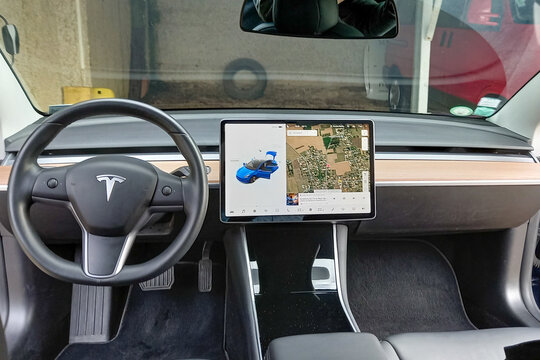The world of mobility is undergoing a transformative shift, driven by the convergence of AI, electric vehicles (EVs), and autonomous technology. According to Bloomberg Green, the global electric vehicle market is projected to surpass 30 million units by 2030, a staggering leap that underscores the rapid evolution of transportation. This article explores how AI and EV innovations are at the forefront of shaping tomorrow’s autonomous mobility, promising a future where transportation is not only more efficient but also environmentally conscious.
Revolutionizing Mobility with AI and Electric Vehicles
Artificial Intelligence (AI) is revolutionizing the way we drive, making vehicles smarter and more intuitive. Electric vehicles, such as those from Tesla, Rivian, and Lucid Motors, are integrating AI technologies to enhance the driving experience and improve safety. Here’s a closer look at how this synergy is setting the stage for autonomous mobility.
1. AI-Driven Vehicle Systems
AI is no longer a futuristic concept; it’s an integral part of modern electric vehicles. Brands like Tesla have pioneered the use of AI with their Autopilot and Full Self-Driving (FSD) systems, which use machine learning algorithms to navigate roads, recognize traffic signals, and even park autonomously.
- Advanced Driver-Assistance Systems (ADAS): These systems utilize AI to assist with lane-keeping, adaptive cruise control, and emergency braking. According to TechCrunch, ADAS is expected to reduce traffic accidents by up to 40%.
- Predictive Maintenance: AI algorithms analyze vehicle data to predict maintenance needs, reducing unexpected breakdowns and extending the lifespan of EV components.
2. The Role of Batteries in Autonomous EVs
The battery is the heart of any electric vehicle, and advancements in battery technology are crucial for the development of autonomous EVs. Companies like BYD and Volkswagen are investing heavily in research to produce batteries with greater range and faster charging times.
- Solid-State Batteries: Offering higher energy density and improved safety, solid-state batteries are seen as the next big leap in EV technology. Battery University reports that these batteries could double the range of current EVs.
- Fast Charging Networks: With companies like Hyundai and Ford EV expanding their charging infrastructure, the goal is to create a seamless experience for users, enabling rapid recharging at numerous locations.
Autonomous Mobility: Where AI Meets the Road
The journey to fully autonomous vehicles is paved with challenges, but AI is accelerating progress by improving vehicle perception, decision-making, and control.
1. Enhancing Safety and Efficiency
AI’s role in autonomous mobility extends beyond navigation. It’s about creating safer roads and more efficient traffic systems.
- Real-Time Traffic Management: AI can analyze traffic patterns and adjust signals to optimize flow, reducing congestion and emissions. According to the IEA, smarter traffic systems could decrease urban travel time by 20%.
- Vehicle-to-Everything (V2X) Communication: This technology allows vehicles to communicate with each other and infrastructure, enhancing safety and efficiency.
2. Overcoming Challenges
Despite advancements, autonomous mobility faces hurdles such as regulatory issues and public trust. However, continuous improvements in AI are paving the way for wider adoption.
- Regulatory Frameworks: Governments are working on policies to ensure safety and ethical use of AI in vehicles, with countries like Germany leading the charge in setting autonomous driving standards.
- Public Perception: Building trust is key. Demonstrations and pilot programs are critical for showcasing the safety and reliability of autonomous EVs.
Practical Tips for Embracing the Future of Mobility
As the landscape of mobility evolves, here are some actionable steps you can take to stay ahead:
- Stay Informed: Follow updates from trusted sources like Electrek, InsideEVs, and Wired to keep abreast of the latest developments in AI and EV technology.
- Explore EV Options: Consider test-driving electric vehicles from leading brands like Nissan and Volkswagen to experience the benefits of AI integration firsthand.
- Plan for Charging Needs: Research local charging infrastructure and plan routes accordingly. Apps and websites can provide real-time information on charging station availability.
- Engage with Pilot Programs: Participate in local autonomous vehicle trials to gain insight into the technology and provide feedback.
Conclusion: The Road Ahead
The convergence of AI and EV innovation is not just shaping the future of transportation; it’s redefining it. As we navigate this exciting journey towards autonomous mobility, the potential for safer, more efficient, and eco-friendly travel is within reach. What steps will you take to embrace this future? Share your thoughts in the comments below, and let’s explore the possibilities together. The road ahead is bright, and the evolution of mobility promises a cleaner, smarter, and more connected world.
As we look to the future, one thing is clear: the fusion of AI and EV technologies will play a pivotal role in creating a sustainable and autonomous transportation ecosystem. Stay tuned as we witness the dawn of a new era in mobility.

